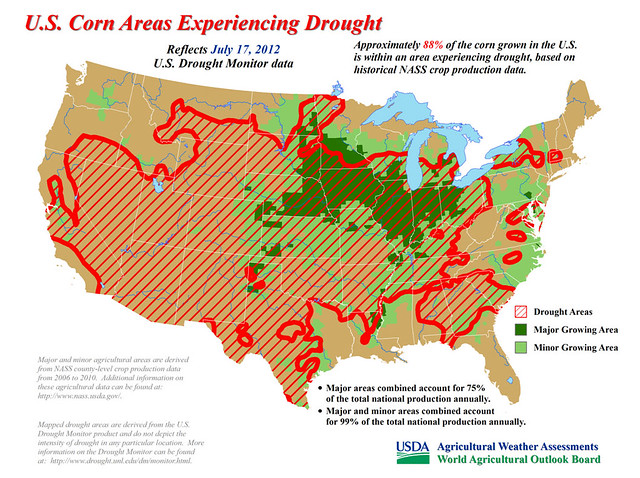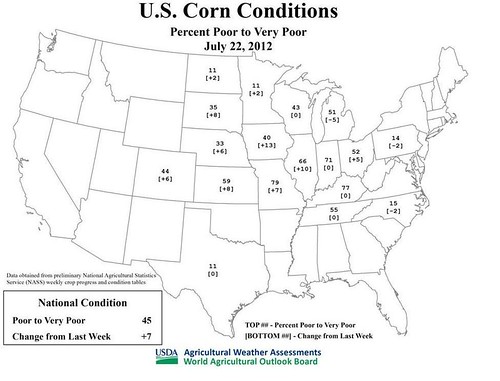
(Click to enlarge)
...The drought of 2012 has rapidly expanded and intensified, covering 64% of the contiguous United States – according to the U.S. Drought Monitor – by July 17. Three months ago, that figure stood at 37%, and at the beginning of the year, only 28% of the lower 48 states had drought coverage.Arkansas, Missouri, Indiana and Kentucky have been hardest hit:
Even more dramatic change in drought coverage has occurred in the Midwest. The latest Drought Monitor indicated that 88% of the U.S. corn and 87% of the soybeans were within an area experiencing drought. As recently as early June, less than 20% of the corn and soybeans were considered to be in a drought area....

(Click to enlarge)
This is exactly the area that Hurricane Ike hit after making landfall:
Unfortunately Ike was one of those long-haul storms that come off the coast of Africa and there's still too much dust and sand for any development for the next few weeks. Better odds on a Gulf of Mexico formation but still, long odds.
Plus, it caused $29 billion in damage

